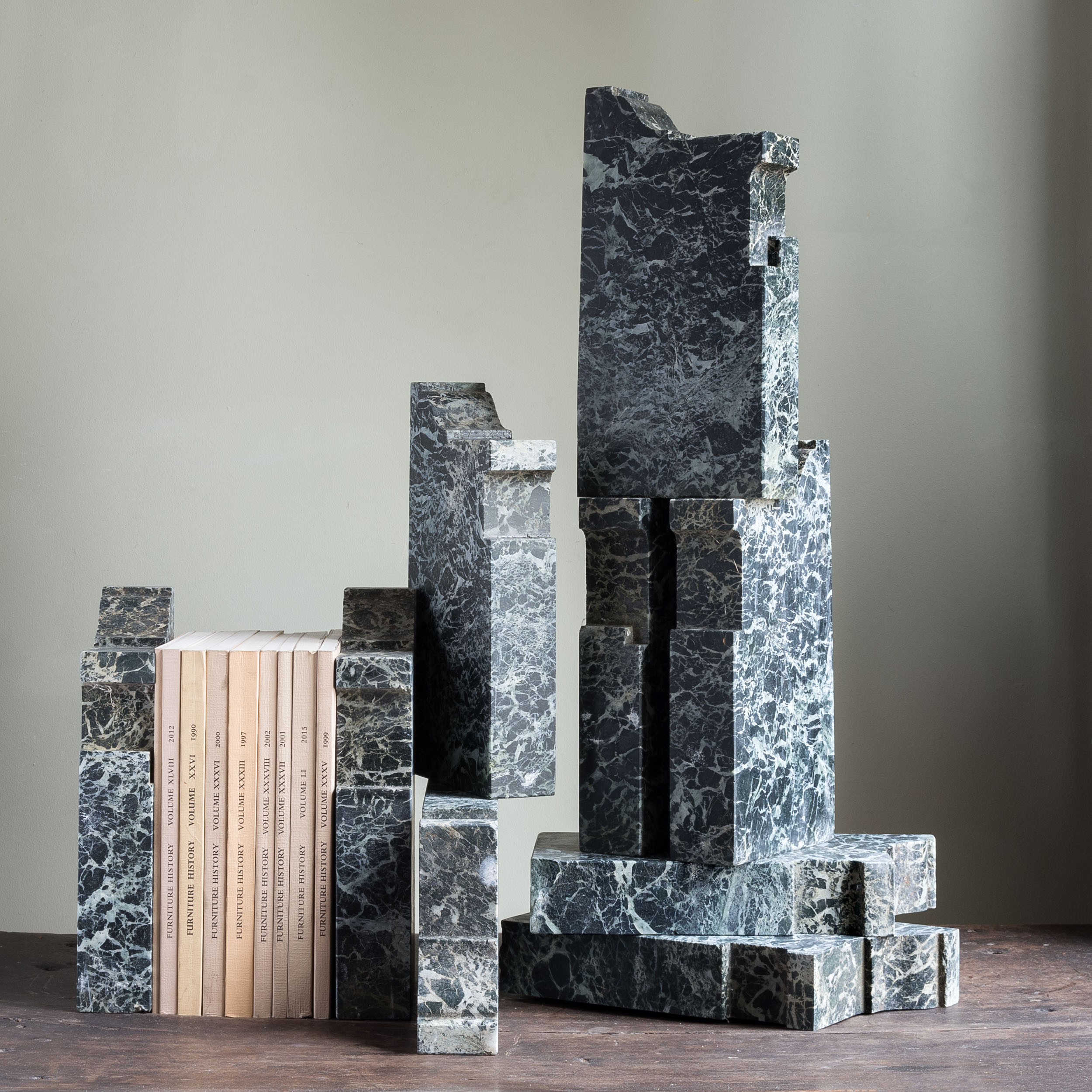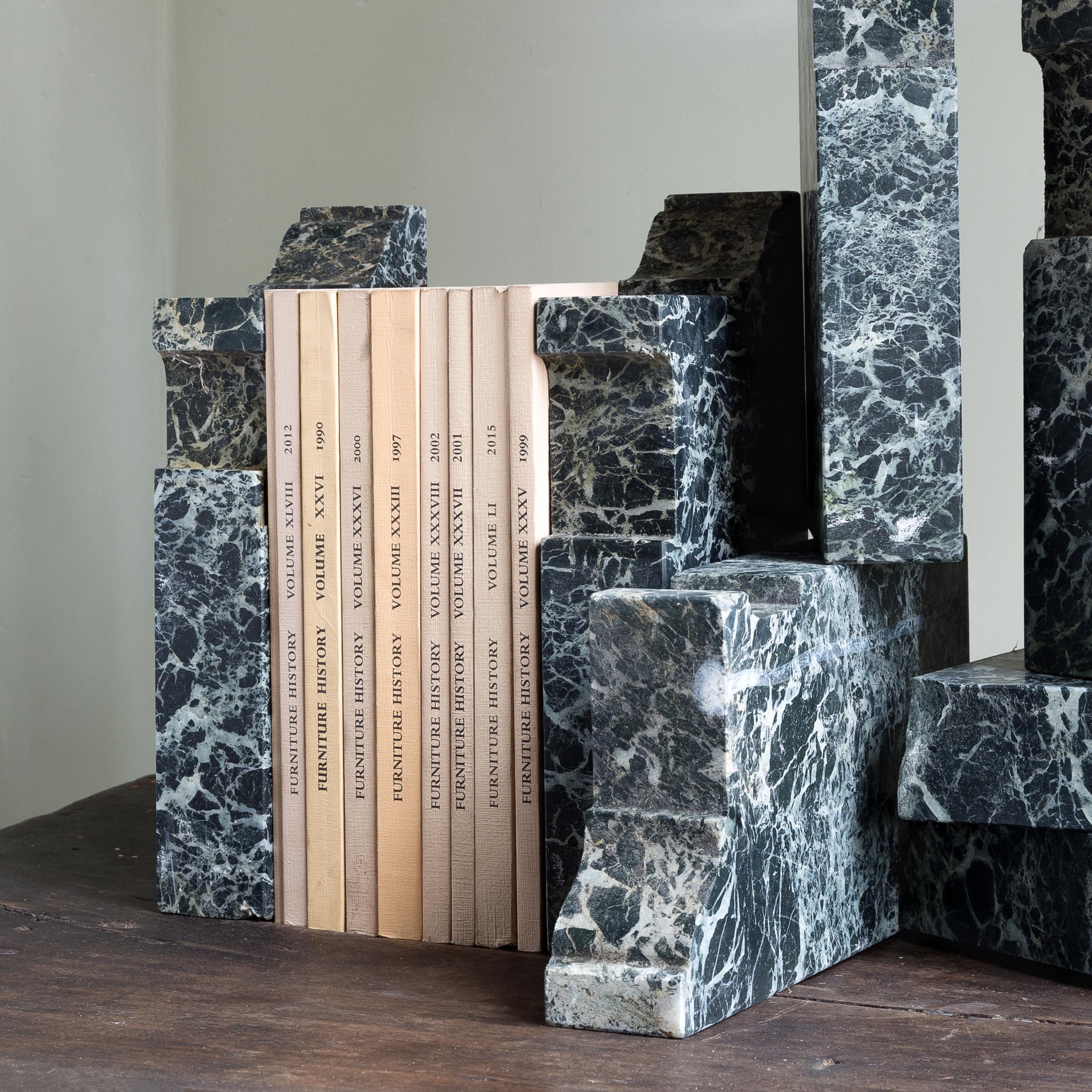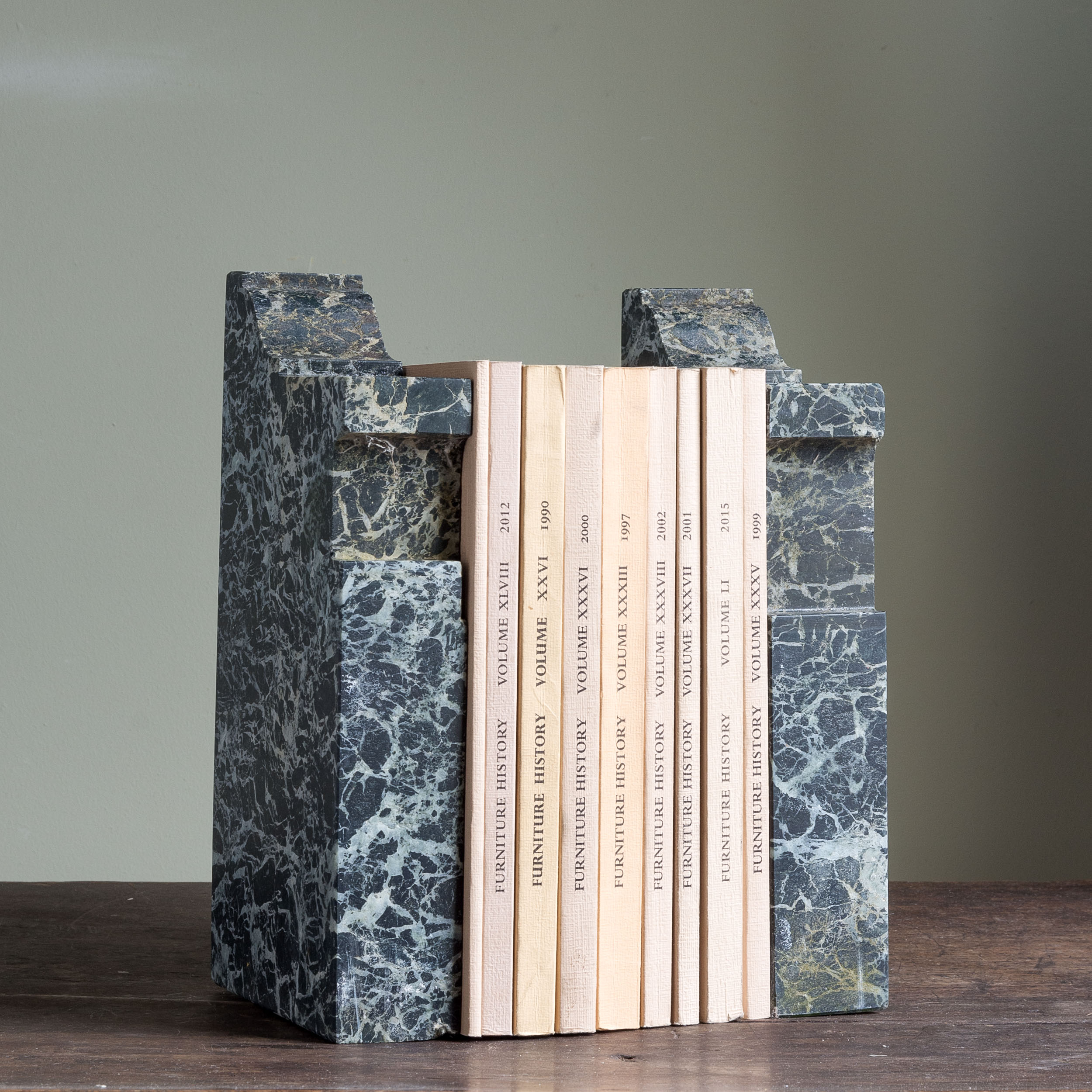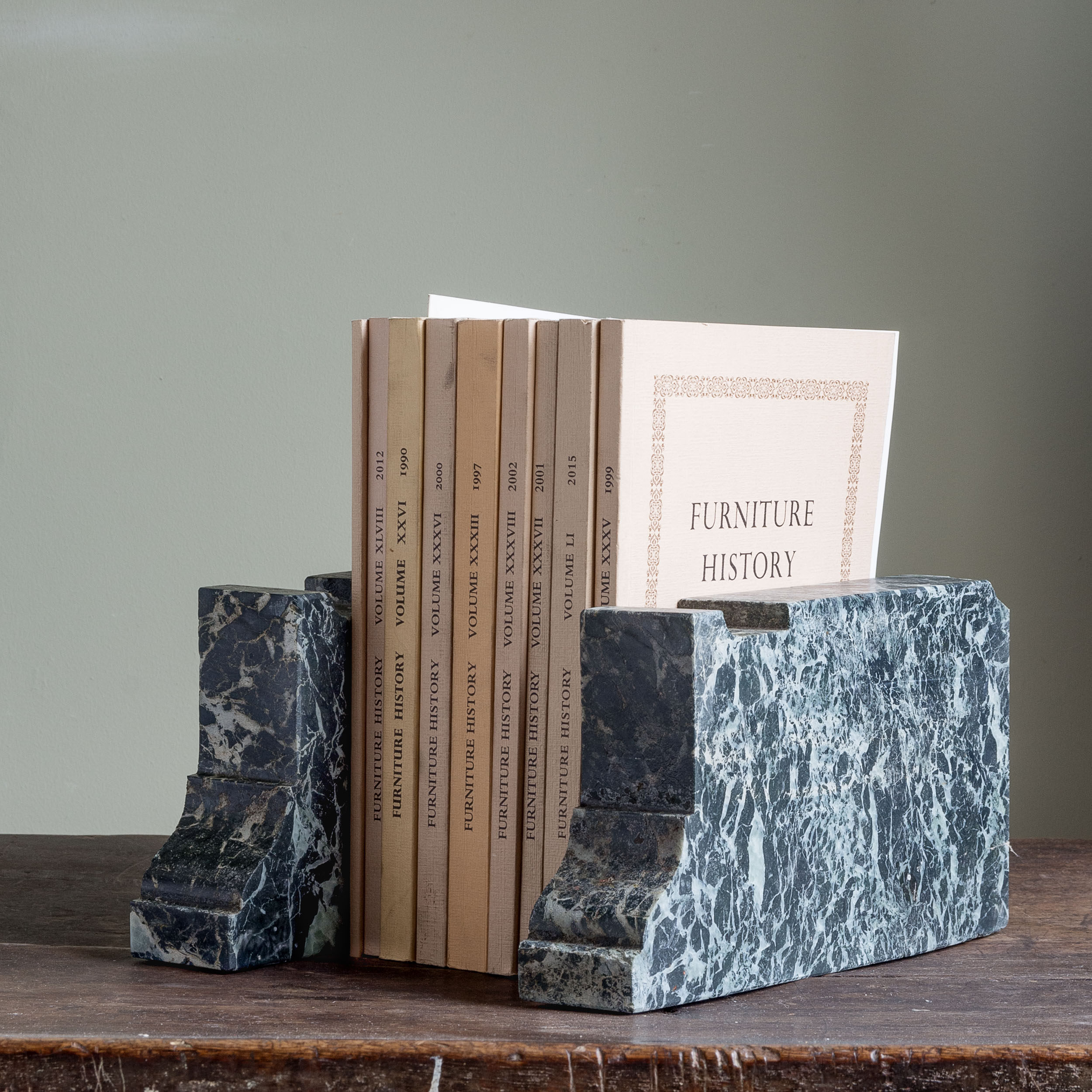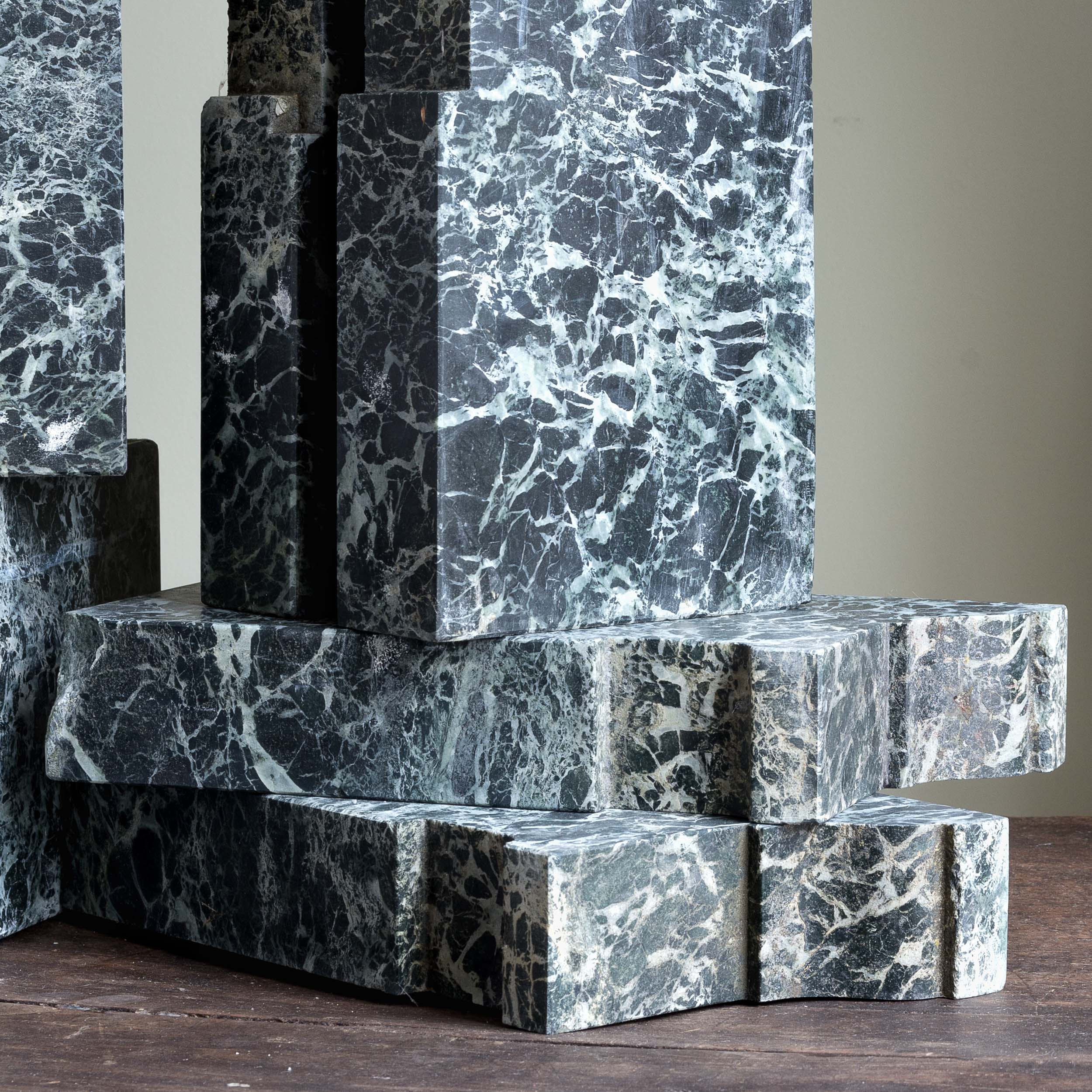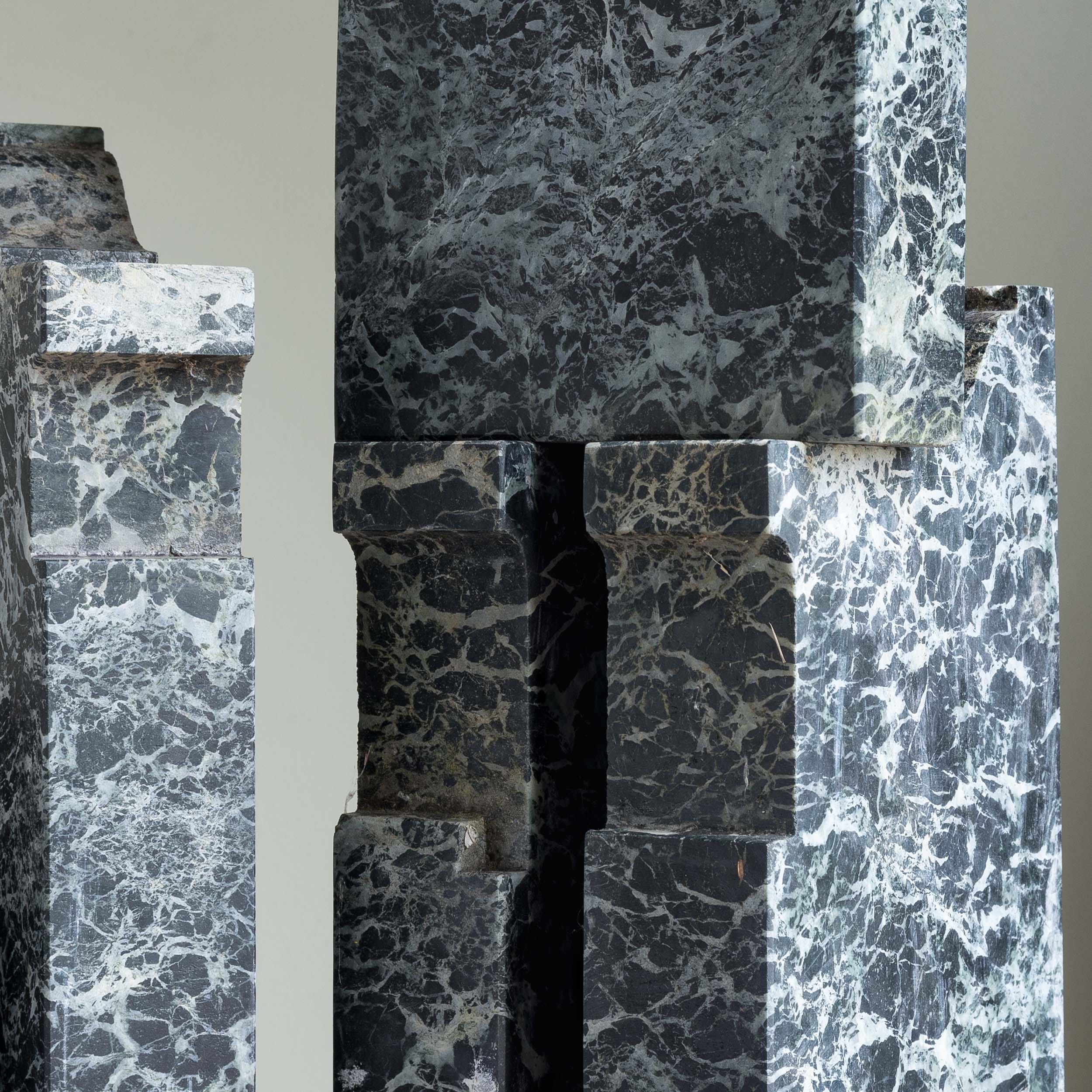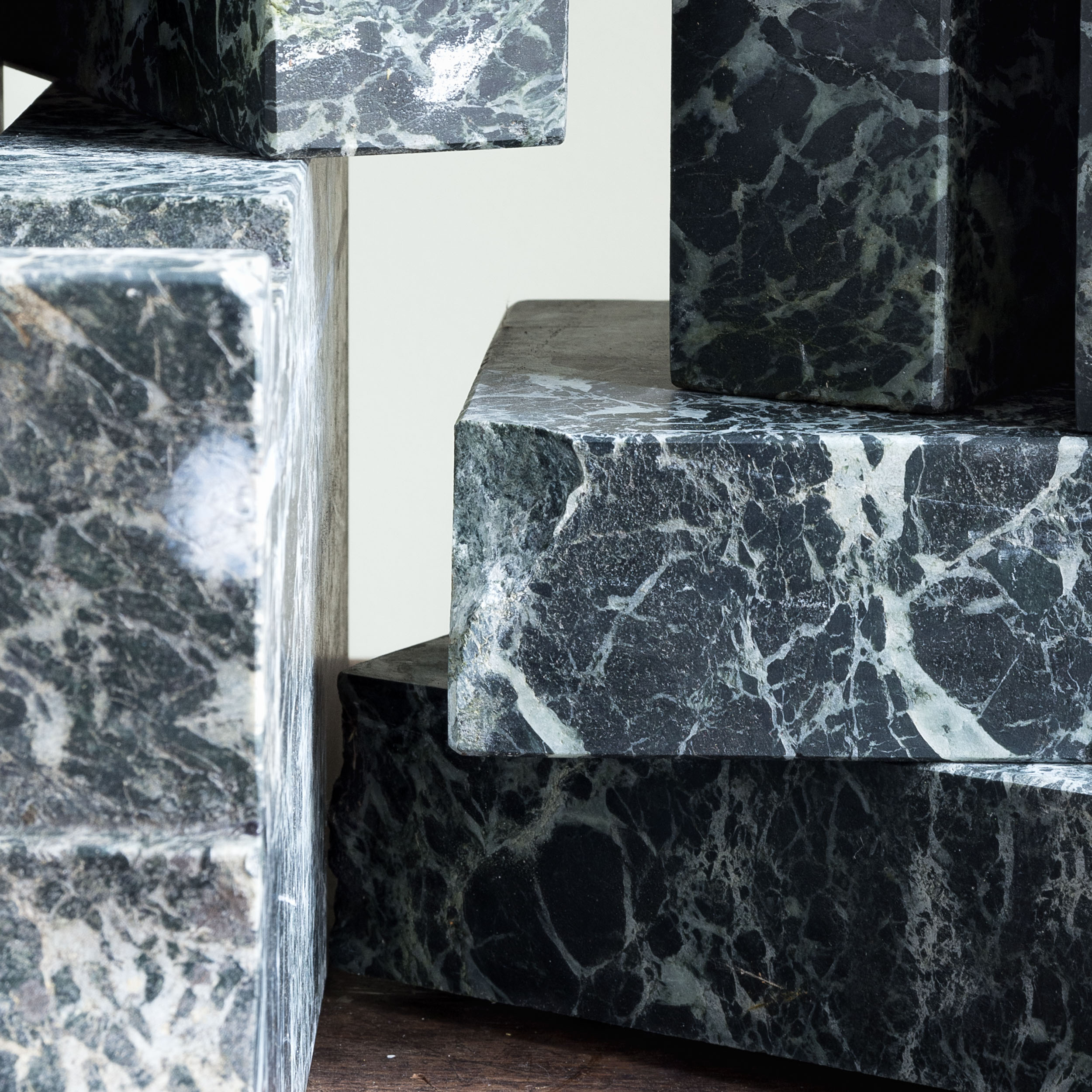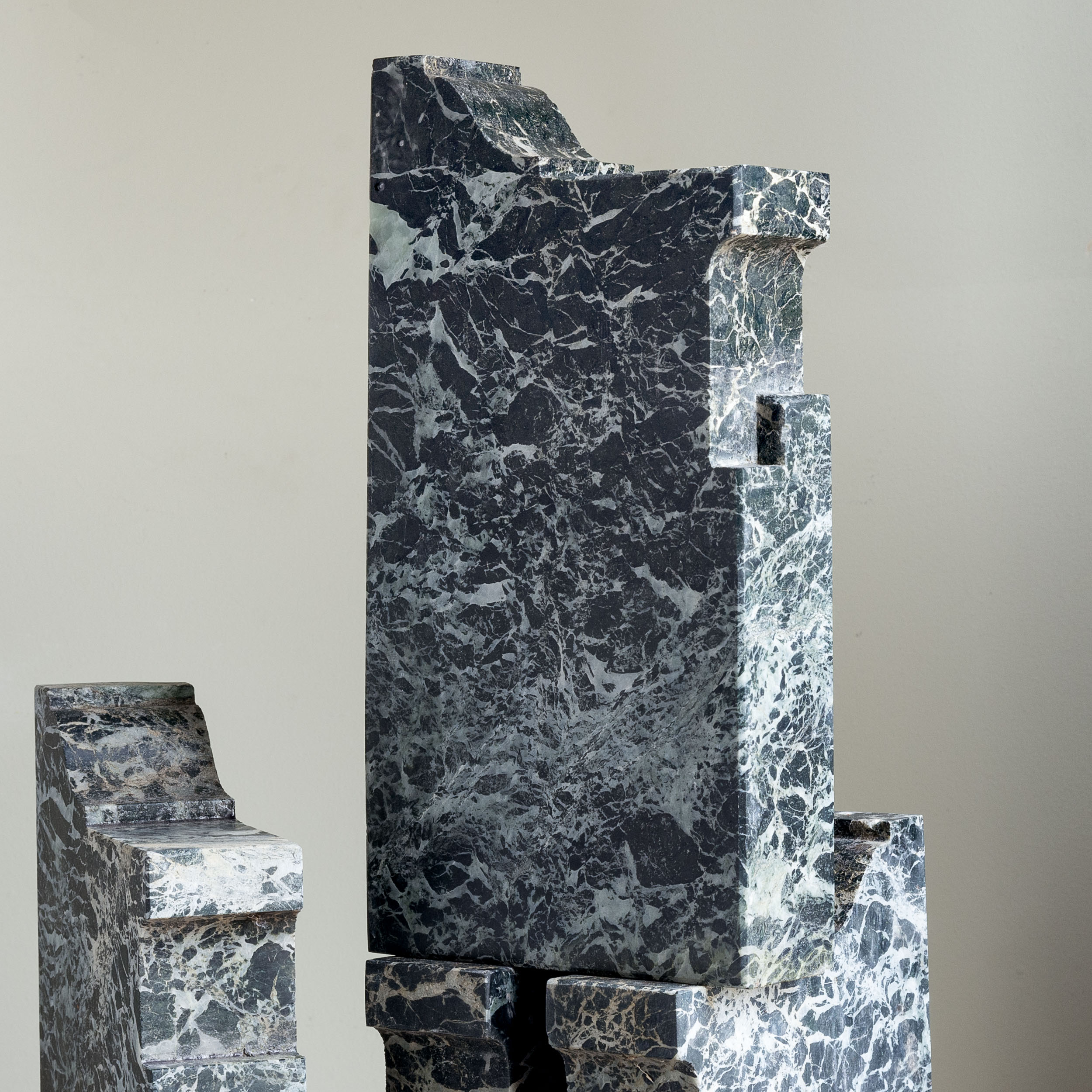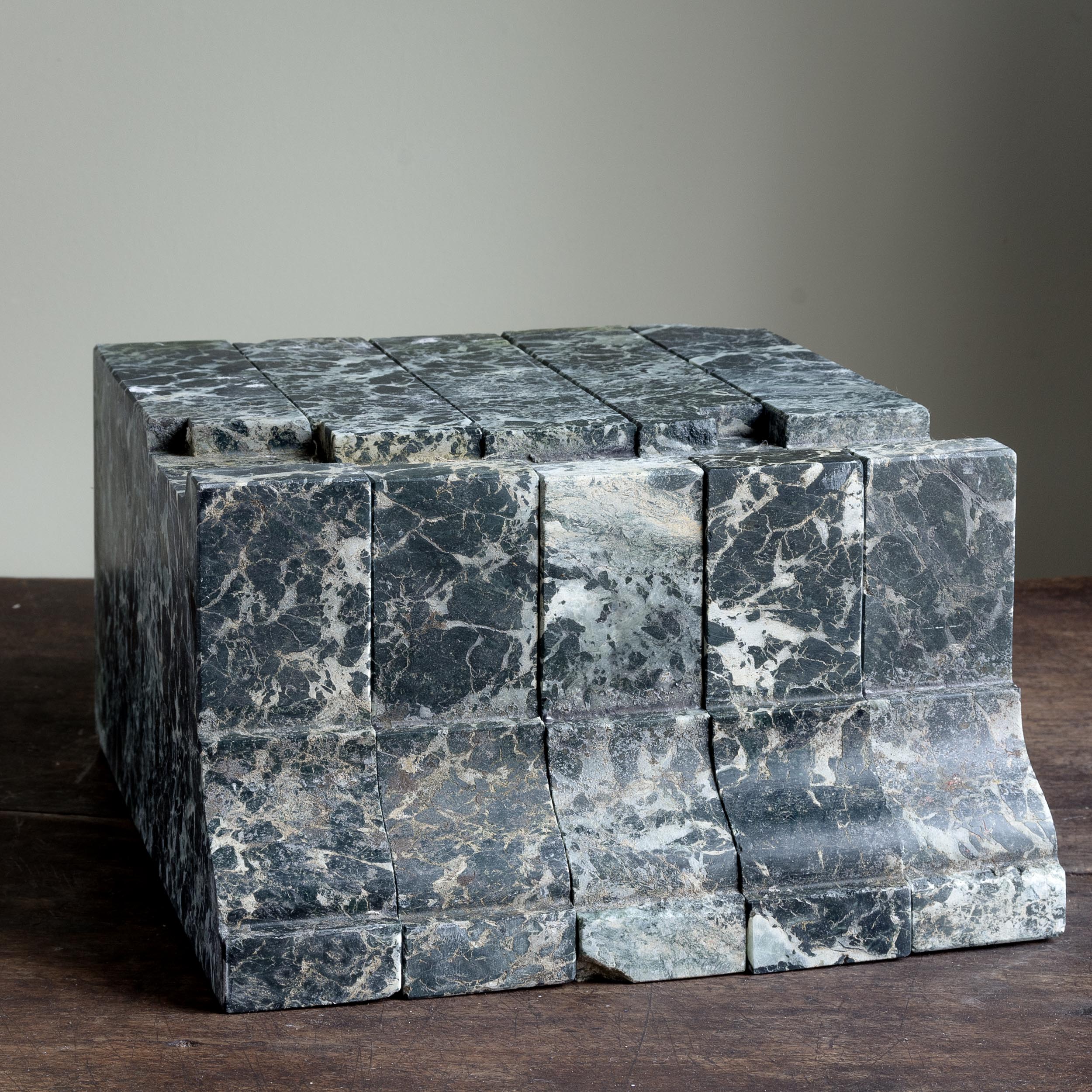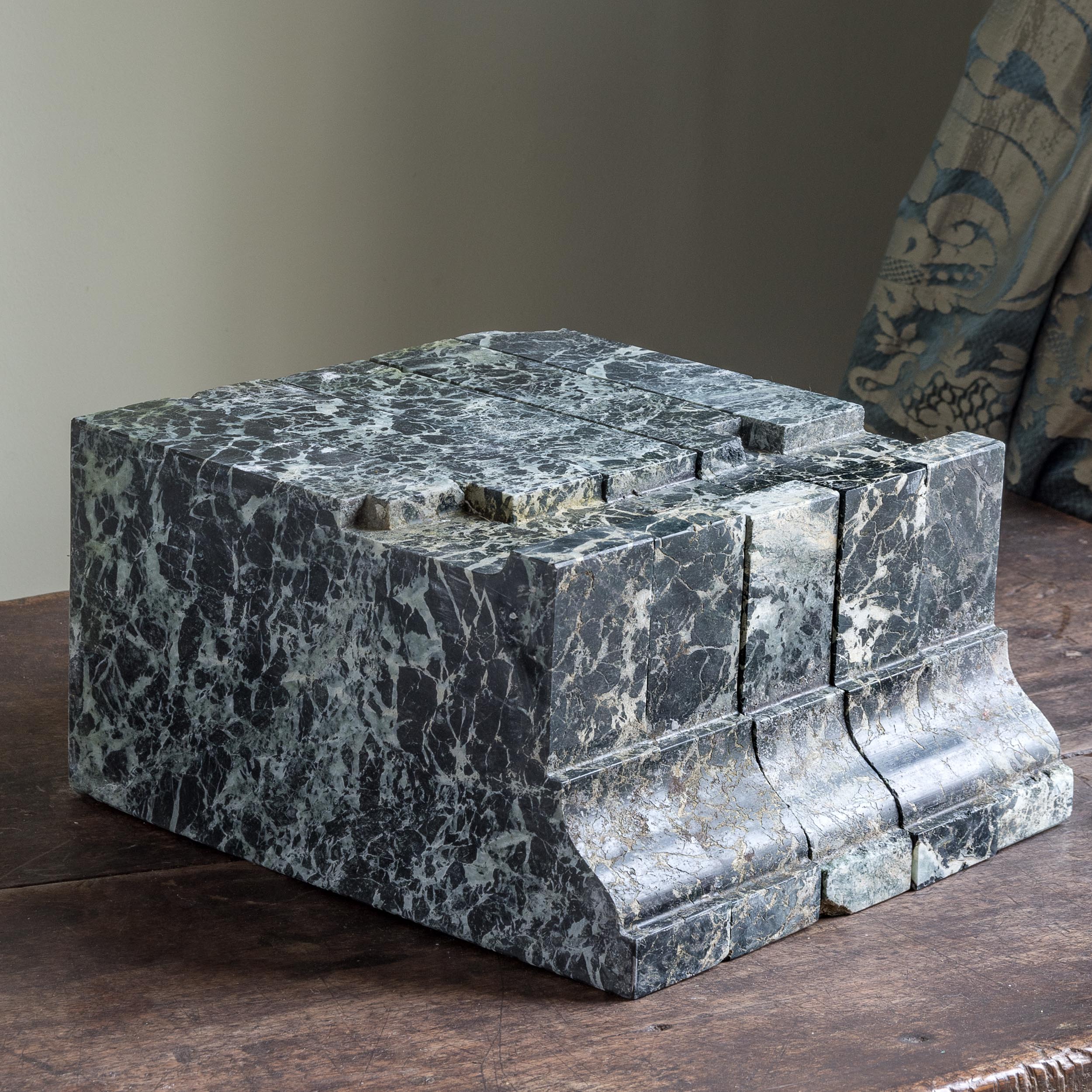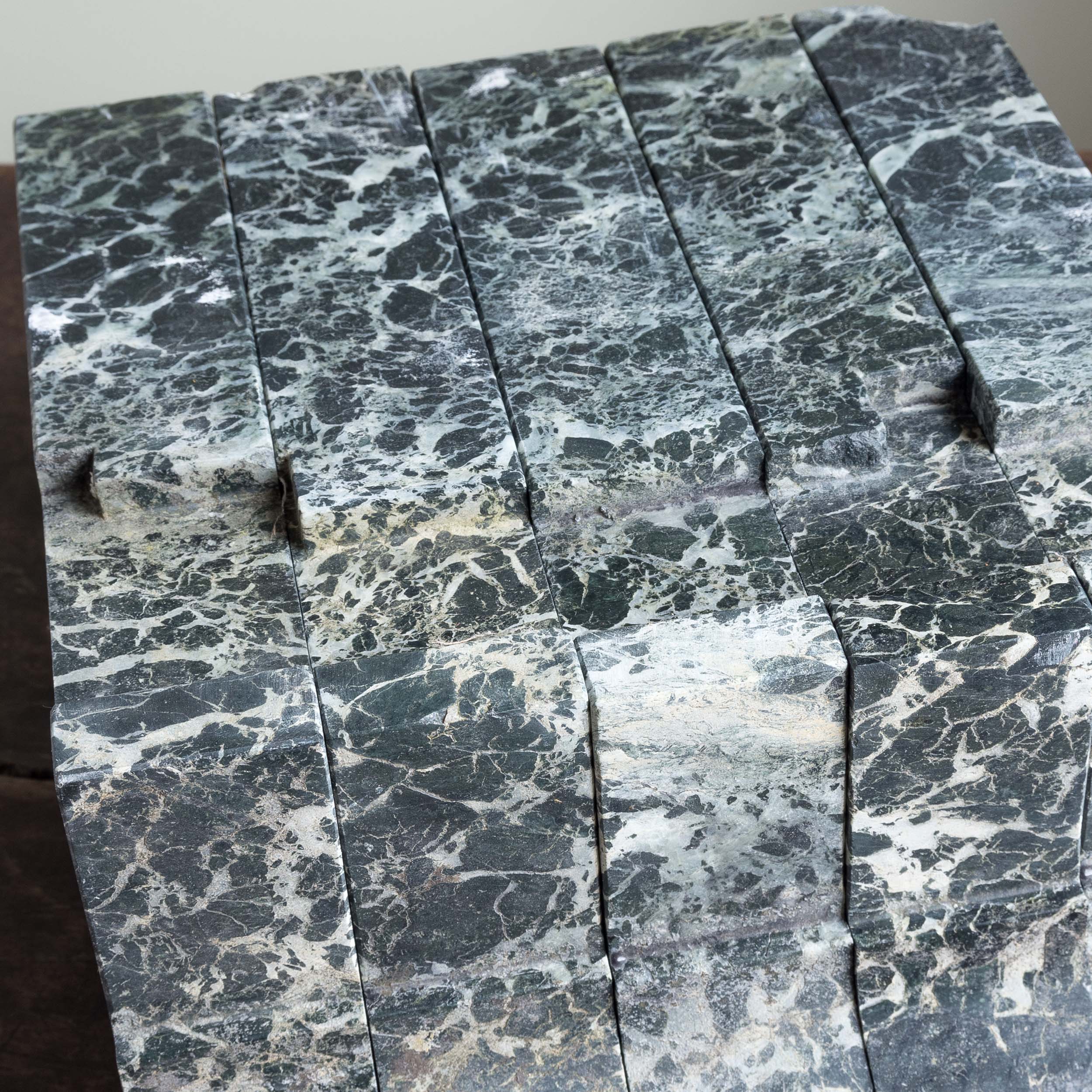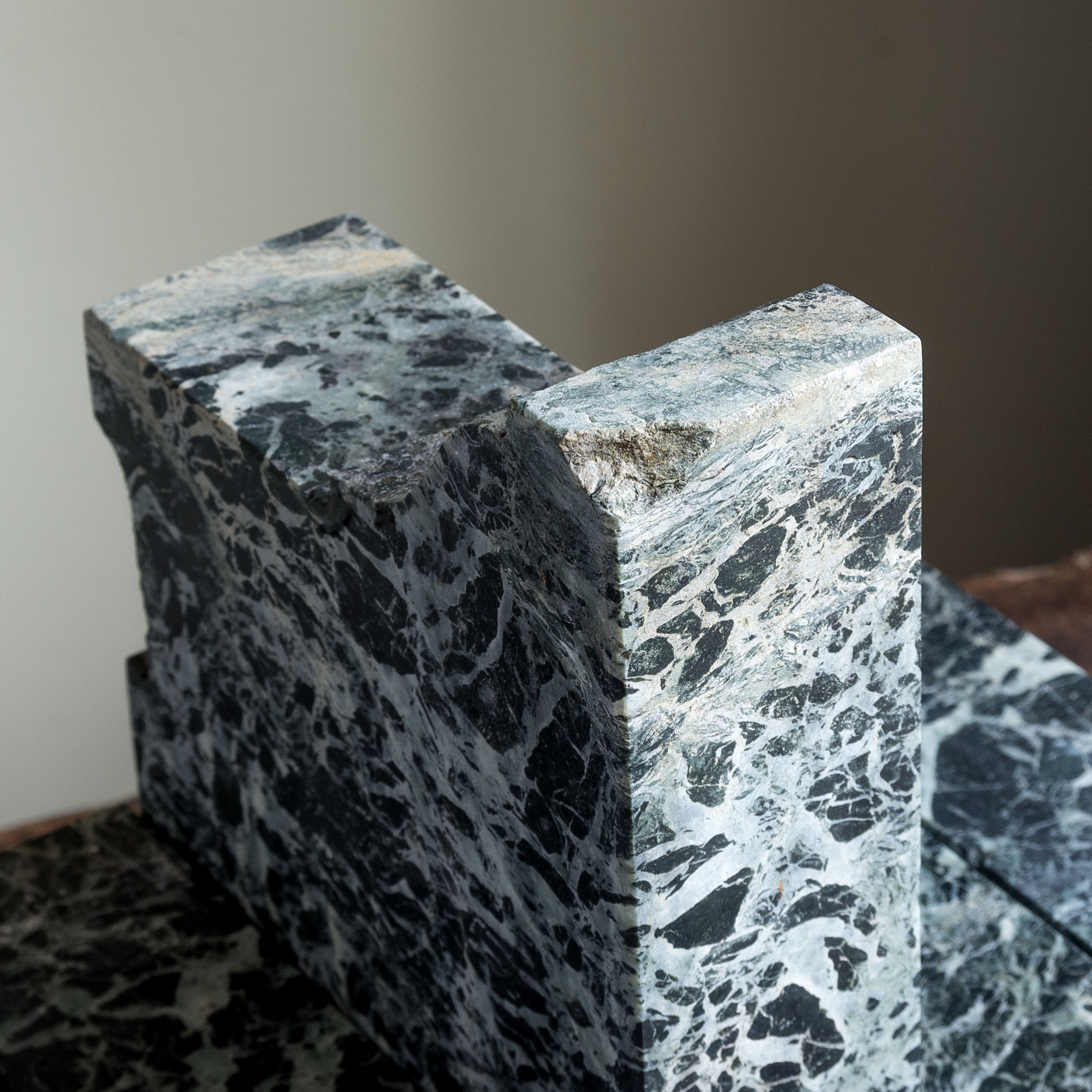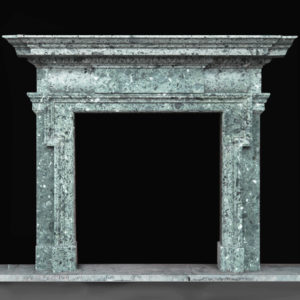Pair of green marble bookends,
each pair of the polished book-ends, rectangular in section and with mouldings to the top edge, some with chips.
£240 per pair
In the most recent works to further extend Tate Britain, some of the extensive dado panelling and doorcases all made in a distinctive green marble, were removed from The Turner Galleries – themselves an extension to Tate Britain dating to 1908. This part of the galleries were generously paid for by Sir Joseph Duveen. LASSCO has examples of the considerable amount of salvaged material that became available (Search “Tate”). These book-ends have been cut from door-cases and moulding that were otherwise incomplete or damaged. They offer an unique opportunity to embellish your library with architectural relics of peerless provenance!
Sir Joseph Joel Duveen (8 May 1843 – 9 November 1908) was an art dealer and benefactor of art galleries. Born in the Netherlands, he and his brother Henry J. Duveen founded in Britain the firm of Duveen Brothers.
Joseph left Meppel in 1866 and settled in Hull, starting as a general dealer. He possessed a good knowledge of Nanking porcelain, then coming into fashion; cargo loads of this had been brought to Holland by the early Dutch traders with China. He purchased large quantities, which he shipped to Hull, and found a ready market in London.
In partnership with his younger brother Henry he secured the chief American trade in Oriental porcelain, and in 1877 opened a branch house at Fifth Avenue, New York. They formed many notable collections in America, and they largely helped in the formation of the Taft, Widener, Gould, Altmann and Morgan art collections.
In 1879 the brothers erected fine art galleries adjoining the Pantheon in Oxford Street, London, and took an important share in the fine art trade, extending their interests in several branches, particularly in that of old tapestry, of which they became the largest purchasers. The Duveens built spacious art galleries in Old Bond Street in the spring of 1894. From 1890 onwards they purchased pictures.
Duveen became wealthy, and was generous in benefaction of art galleries. In May 1908 he undertook the cost (about £35,000) of the extension to the Tate Gallery. It was designed by W. H. Romaine-Walker: five rooms were added to the main floor and two to the lower. It allowed the gallery’s paintings by J. M. W. Turner to be displayed, and was called the Turner Wing. It was completed in 1910.
He was knighted on 26th June 1908 but died in France, on 9th November the same year. He is buried at Willesden Jewish Cemetery. His wife Rosetta, daughter of Abraham Barnett of Hull, whom he married in 1869, survived him; they had a family of ten sons and four daughters. His son Joseph Duveen (1869–1939) was an influential art dealer.
Recently Viewed Items
-
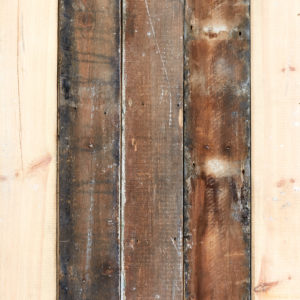
Shoreditch Beam Pine
£90 + VAT Per Square Metre.Shoreditch Beam Pine
Milled Beam Pine reclaimed from industrial buildings in East London. The batch is a mix of rough and smooth faced boards and can be laid with the smooth or rough surface upwards.£90 + VAT Per Square Metre. -
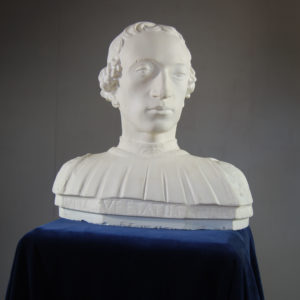
An English plaster bust of Rinaldo della Luna
£645An English plaster bust of Rinaldo della Luna
the gaunt male with head turned to sinester, wearing a pleated tunic, with an indistinct description on the plinth "RINALDODELLA LVNA . ETATIS . ANNO XXVII OPVS MINI NE. MCCCCLXI" and bearing the Brucciani model number 2929,£645 -
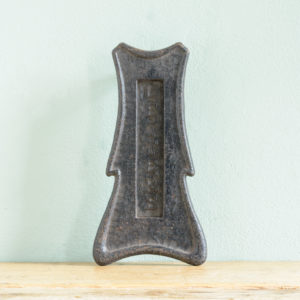
Edwardian cast iron letterplate,
£55Edwardian cast iron letterplate,
with embossed 'LETTERS' to the plate, stamped 'Rd No 496194' to rear£55

